The perfectly competitive market model can help you achieve highly targeted marketing, stronger relationships, and more sales.
In this article, you’ll learn what a perfectly competitive market looks like and how it helps you engage customers without slashing your prices.
A Perfectly Competitive Market Defined
A perfectly competitive market is an economic structure in which many businesses sell identical goods. There are no startup costs or legal restrictions.
It’s a theoretical market structure in an ideal-world scenario that couldn’t possibly exist in the modern market.
Perfect competition (otherwise known as pure competition) is unrealistic. But it’s a useful model for explaining how supply and demand impact prices and buyer and seller behavior.
Perfect competition is the opposite of a monopoly. A monopoly is where a single firm provides a unique product and high entry barrier to prevent other suppliers from competing. This could be costs and legal requirements.
For instance, utility suppliers such as natural gas and electricity companies are natural monopolies because it’s difficult for new suppliers to break into the market and provide the same services at lower costs.
In a monopolistic market, buyers have one option. Sellers have the market power to control pricing. Monopolies are also mostly illegal in the 21st century.
In reality, all markets fall somewhere between perfect and monopolistic competition. Both are benchmarks for comparing real-life market economies.
The Characteristics of Perfect Competition
Companies are said to be in perfect competition when a market exists with the following conditions:
- Homogeneous products: A large number of sellers produce and sell an identical product or service. For example, everyone sells the same soap to a village. It’s the only soap available.
- Large audiences: Many buyers are on hand to purchase the product. In our example, everyone in the village uses the same soap.
- Information transparency: Buyers have perfect information. All the information they need to make purchase decisions. The soap comes with a complete breakdown of ingredients, costs, and sourcing information.
- No entry barriers: Businesses can enter and exit the market freely. There are no start-up costs or legal restrictions, for example. Anyone in the village can start or stop selling the soap.
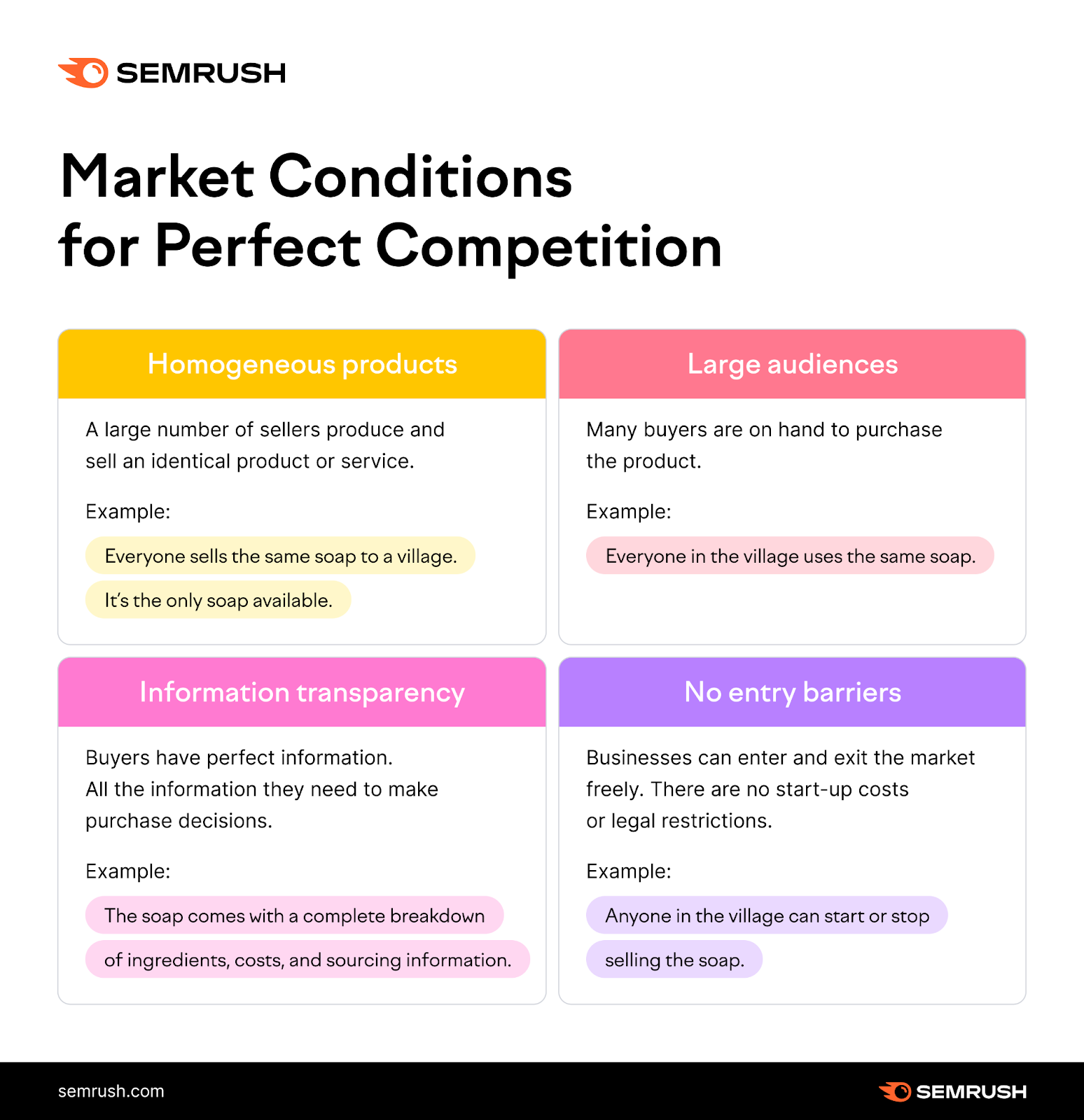
A perfectly competitive firm is a “price taker,” which means it can’t increase or decrease prices. It must follow the price that supply and demand levels determine.
Complete equality means no individual buyer or seller in a perfectly competitive market can affect product prices.
Examples of Perfectly Competitive Markets: Agriculture
Economists often use agricultural markets to explain perfect competition theory. It remains a near-perfect definition of perfect market competitiveness.
For example: Many farmers grow the same crops. Their products are largely interchangeable.
There are millions of buyers who all understand the product being offered.
The entry barriers for growing and selling crops are low. There are only basic set-up costs, for example.
Data from the U.S. Department of Agriculture shows that corn farmers received an average of $7.37 per bushel in June 2022. Wheat farmers received an average price of $9.55 per bushel.
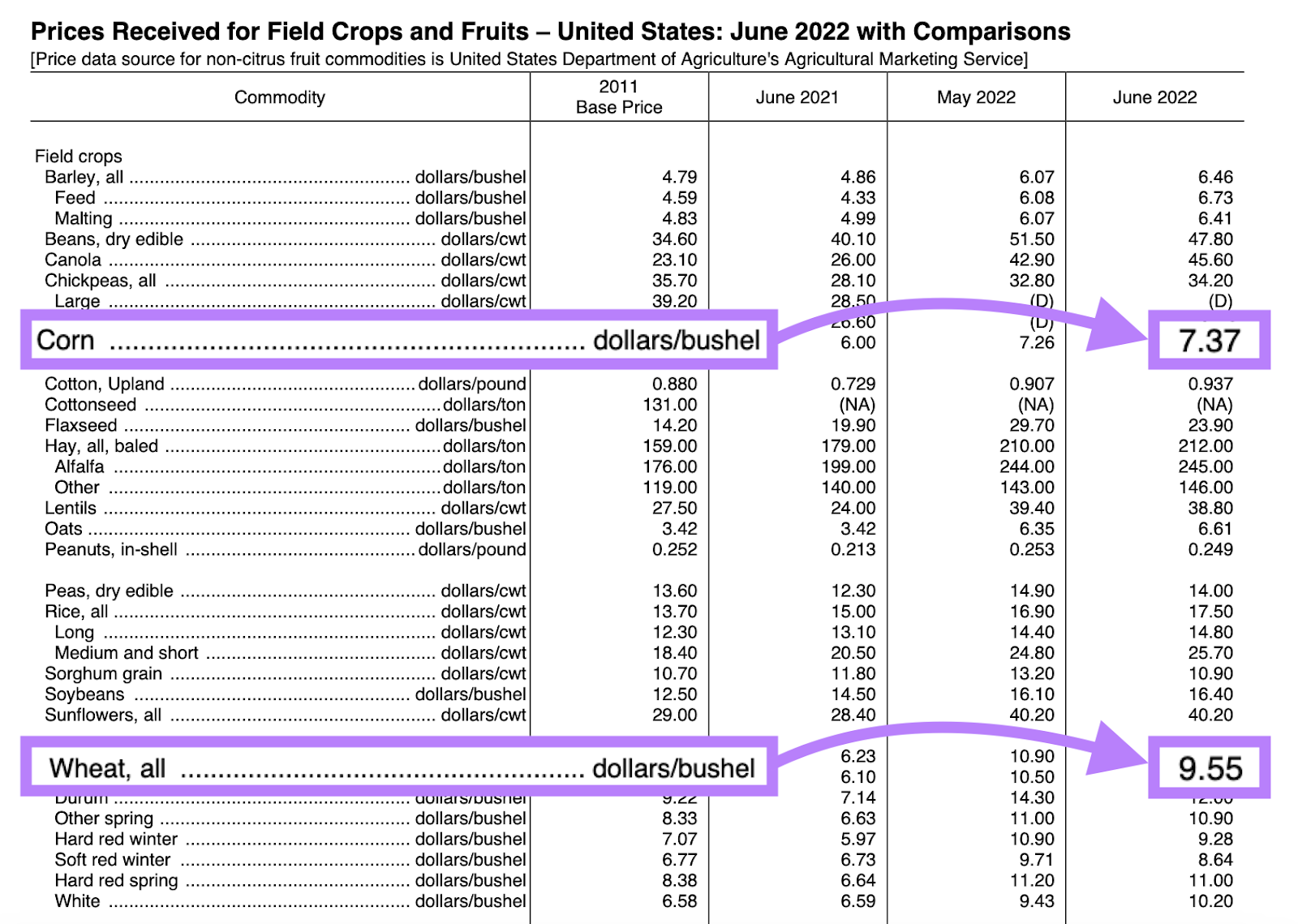
With no product or service differentiators, a corn farmer attempting to sell bushels at $8.37 or a wheat farmer trying to sell for $10.55 wouldn’t find any buyers.
Highly Competitive Market Examples
No real market is perfectly competitive. Even in agriculture, individual firms can differentiate themselves using factors such as convenience, customer service, and marketing.
But some market types are much closer to perfect than others. These are considered “highly competitive markets.”
In highly competitive market conditions:
- Many businesses make comparable products or sell identical products.
- There’s consistently high market demand for these products.
- Buyers have the information they need to make purchasing decisions. But they still need to research their options.
- Entry barriers are low. There are always new firms to compete with.
Highly Competitive Market Example: Grocery Stores
Take grocery stores that sell branded items.
Most source identical stock from a shared pool of suppliers at the same or similar trade costs.
They have to charge customers more than market price to turn a profit. This means they can’t undercut competitors to attract buyers. They have to stand out in other ways.
Many use loyalty schemes, delivery services, and corporate social responsibility (CSR) messages to engage shoppers. This allows them to maintain or grow their market shares.
Vons is a prime example. Its website promotes a loyalty scheme and delivery benefits:
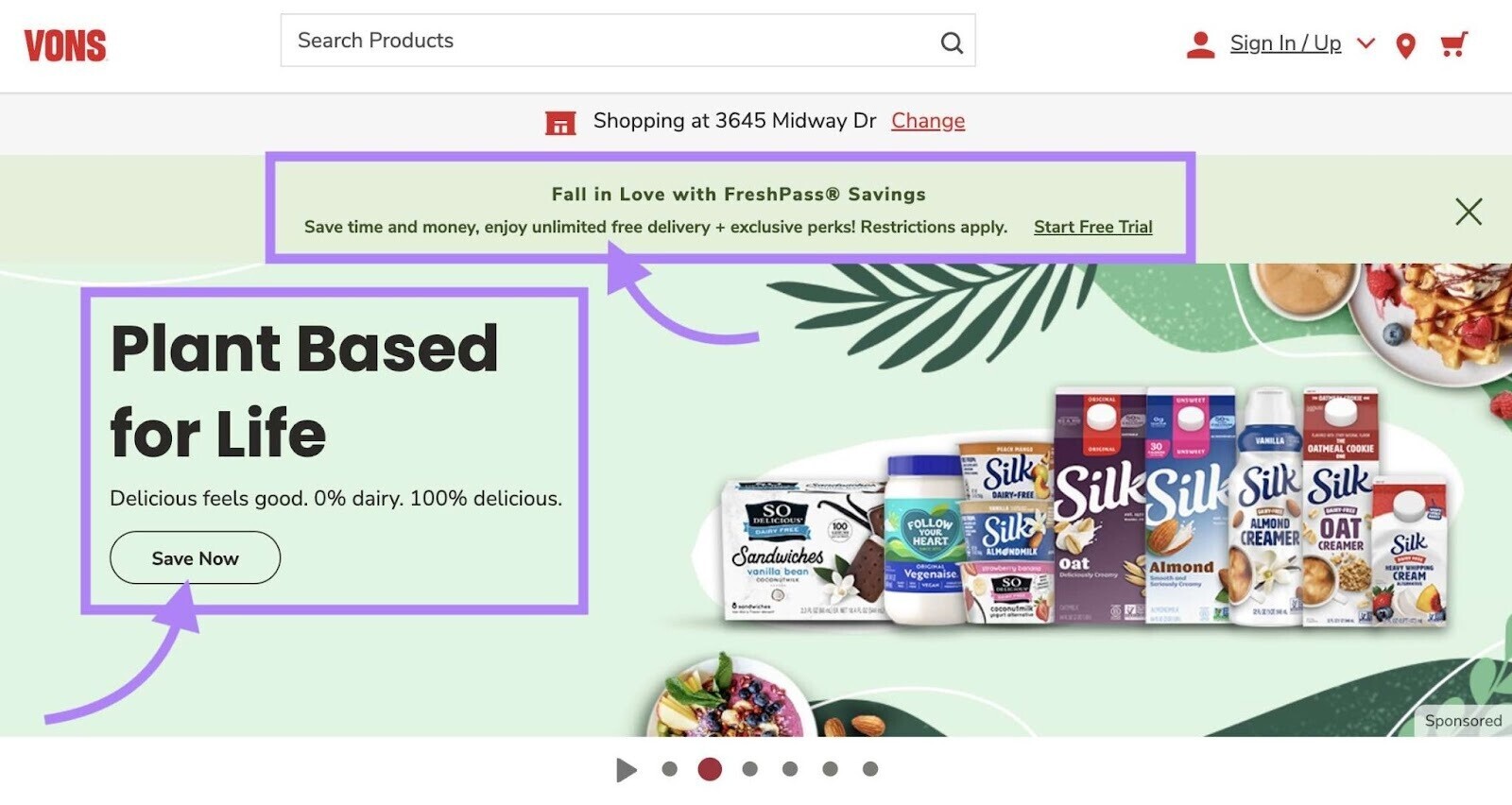
But differentiators can weaken if they become the norm. Grocery store loyalty schemes are everywhere. Shoppers expect them.
Vons has further separated itself with experience-enhancing content, such as a meal planner and shopper community.
Highly Competitive Market Example: Consumer Technology Retailers
According to Counterpoint, a technology research firm, Apple iPhones accounted for around half of all U.S. smartphone shipments by the end of 2022. This means retailers have a huge audience to sell to.
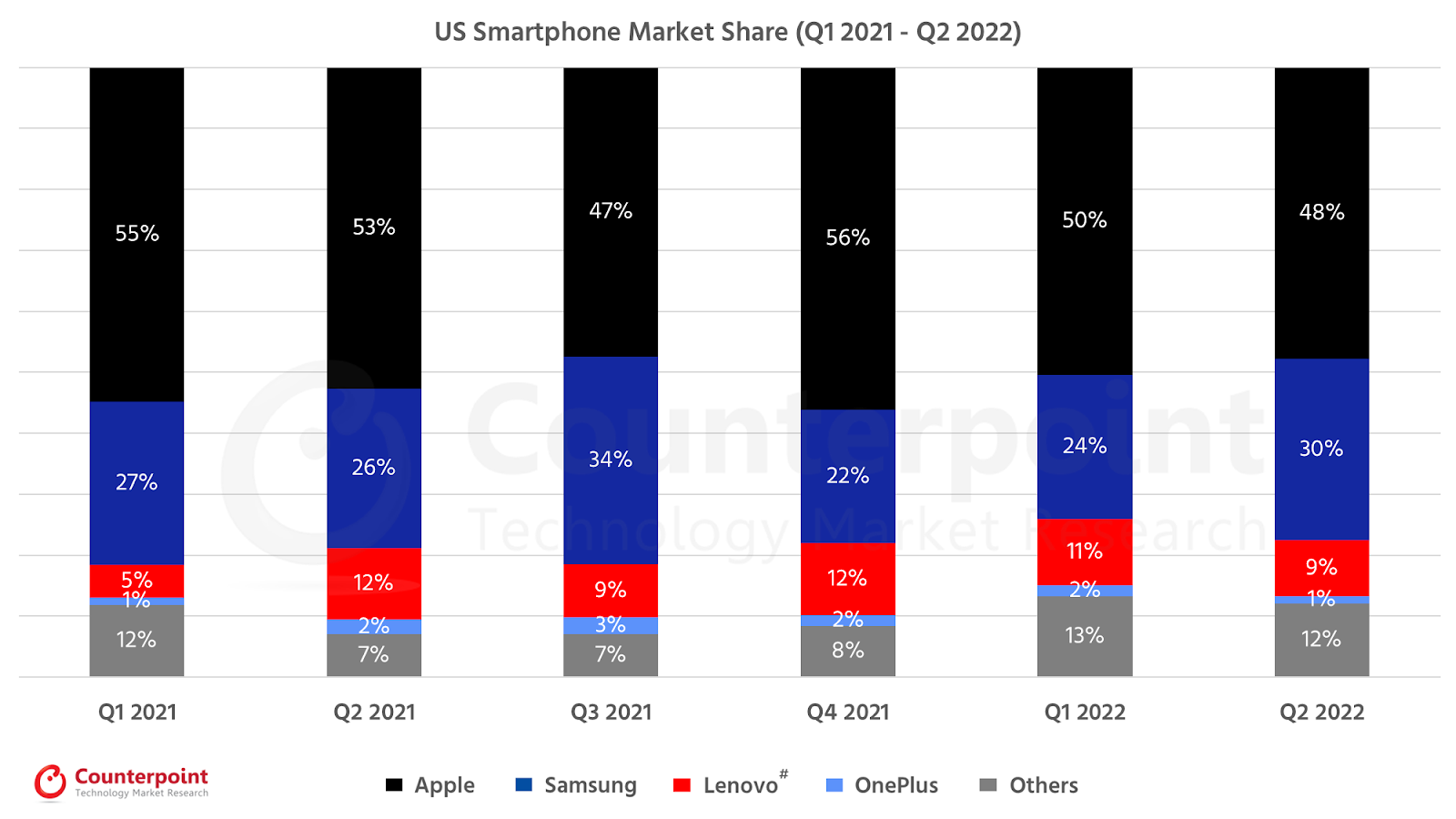
However, Apple reportedly uses a minimum advertised price (MAP) strategy. That stops retailers from pricing devices below a certain amount. They must compete in other ways.
Telecom companies make iPhone deals more appealing by reducing the costs they can control: data allowances, minutes, and texts. They sign users for lengthy contracts to ensure the total cost guarantees a long-term profit.
Most, like Verizon, sweeten their deals with gifts and other benefits.
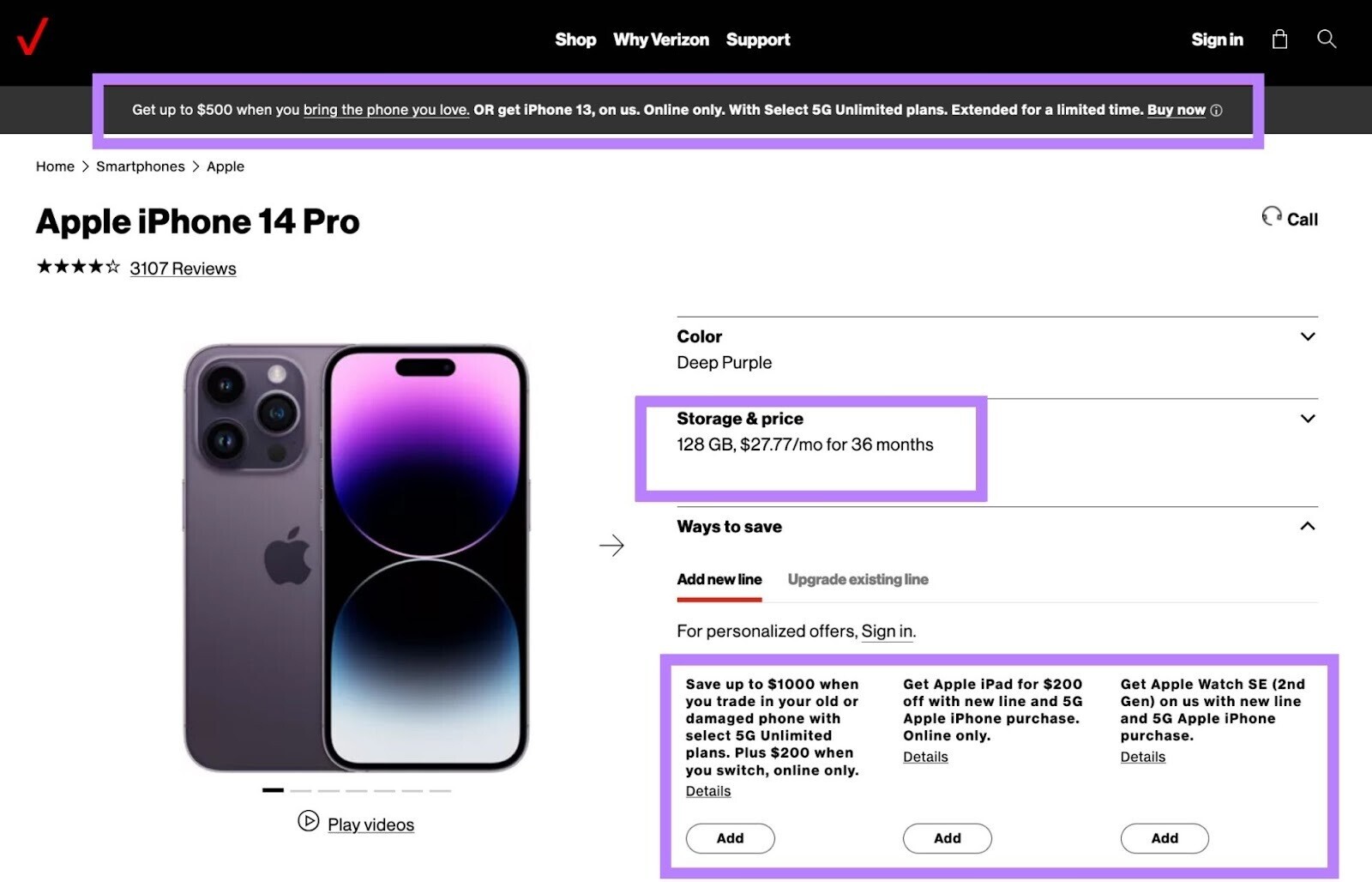
This page entices new customers by highlighting rewards. $500 bonus for bringing their phone to the plan. Savings of up to $1,000 with a trade-in of an old phone. Free apple products with a new line.
Stores that sell iPhones without contracts have it harder. Instead of absorbing costs in long-term packages, they rely on short-run differentiators such as emotive marketing and aftercare services.
Best Buy, for instance, offers two years of free AppleCare+ protection for buyers who join its Totaltech program:
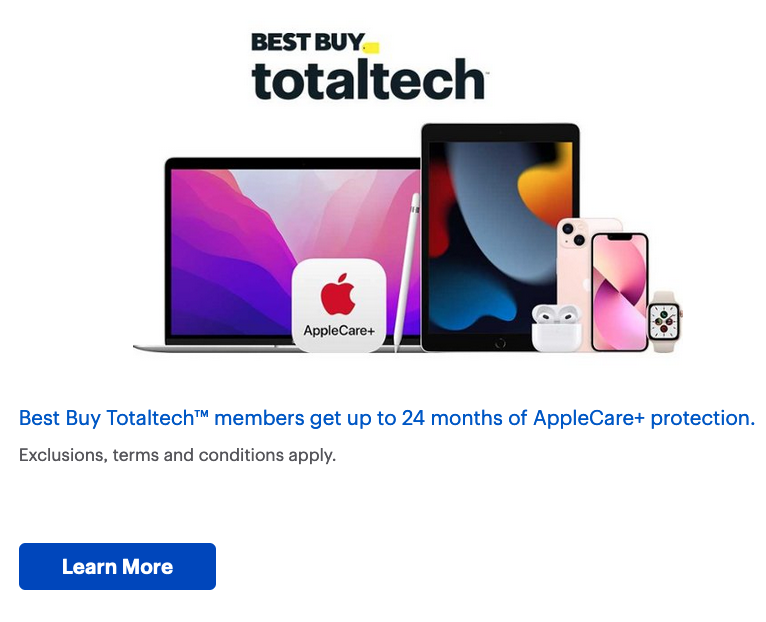
When a business uses strong differentiators, it can regain some pricing control.
For example, U.K. retailer John Lewis has a reputation for great customer service and warranties. This allows it to sell products at higher prices than other stores.
How to Compete in an (Almost) Perfectly Competitive Market
Real-world markets stray from the perfectly competitive ideal because of differentiation in production, marketing, and selling.
Put simply: Companies establish brand value by promoting their differences.
For example, Amazon promotes convenience and personalization.
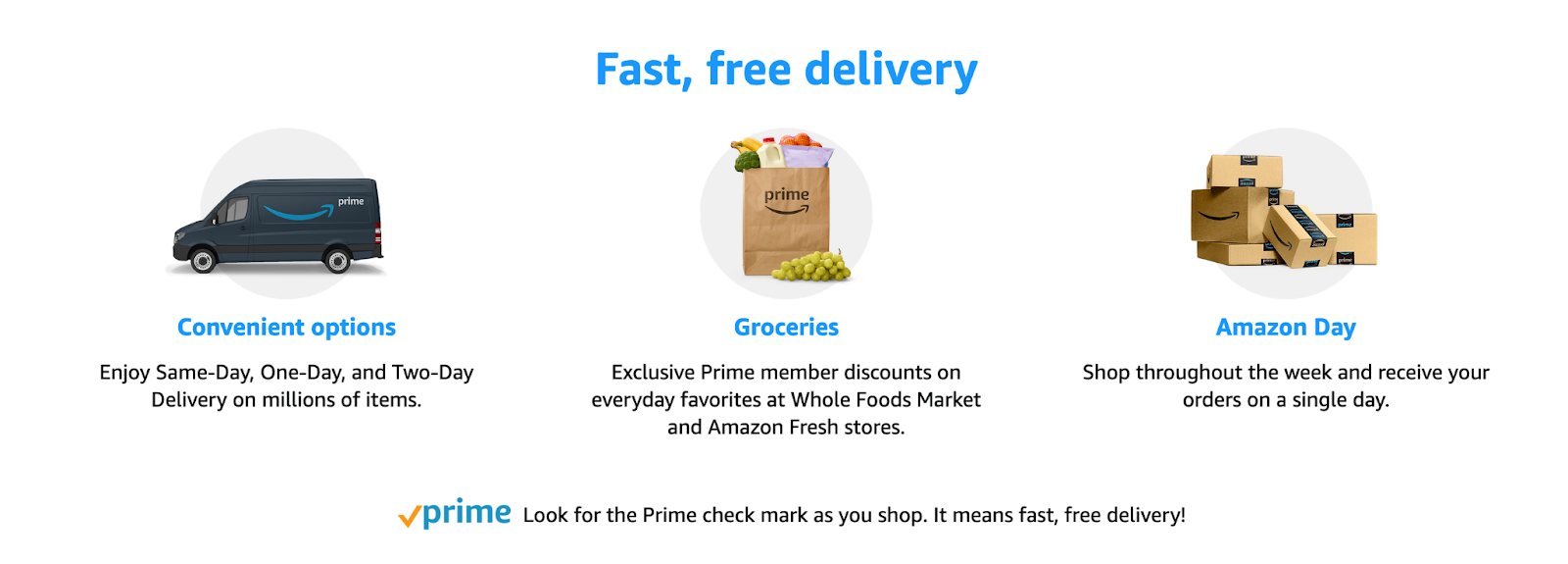
By appealing to buyers’ convenience needs more effectively than other stores, Amazon sells more of the same products and holds 37.8% of the U.S. e-commerce market— six times the percentage of its nearest competitors.
Amazon’s massive spending power and infrastructure help. But there are still many differentiators smaller companies can use.
Here are five ways to outsell others in a highly competitive market:
1. Personalize Your Customer Service
Personalization matters to your audience.
A McKinsey study found that 71% of consumers expect brands to deliver personalized interactions. And 76% get frustrated when that doesn’t happen.
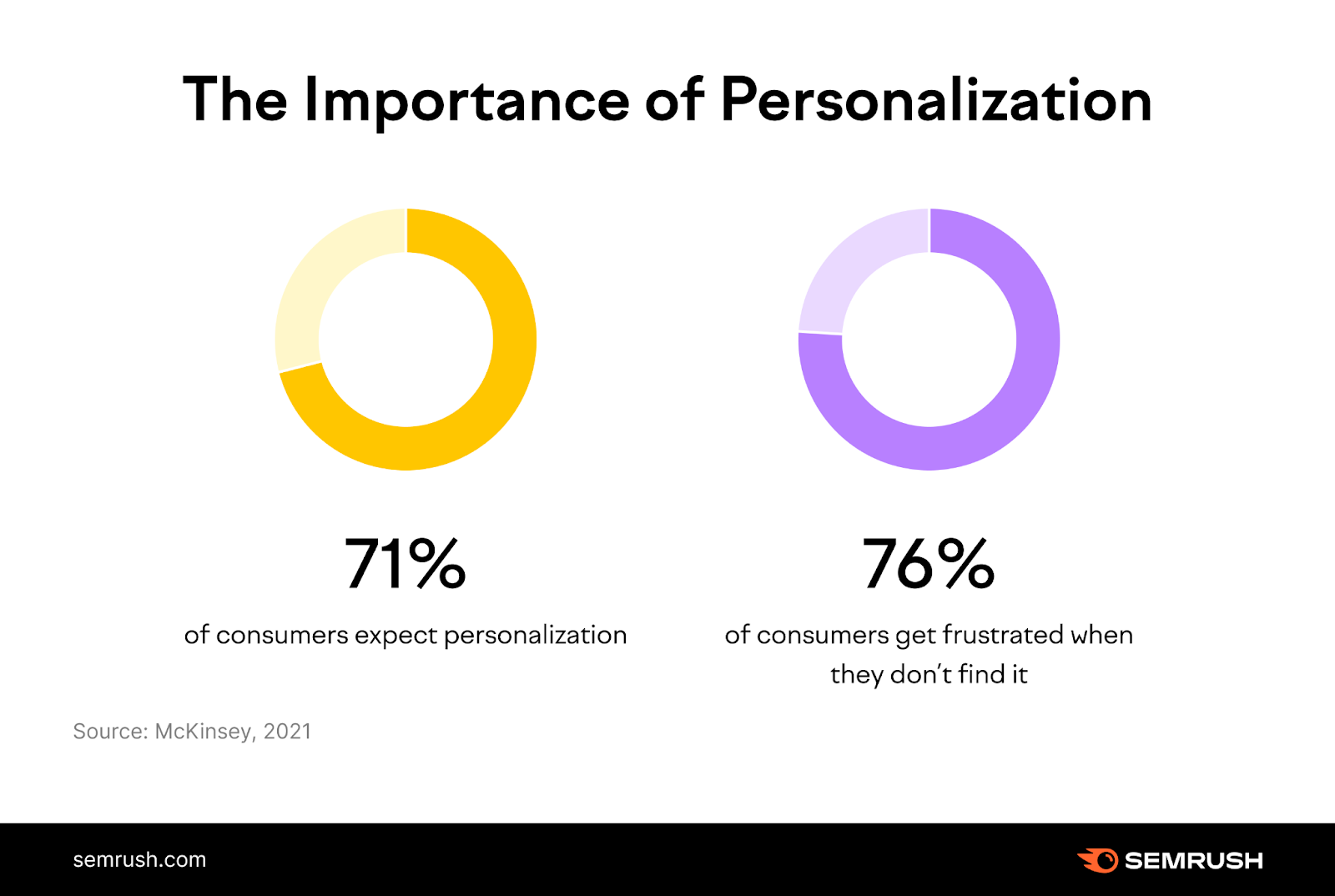
Giving buyers what they want (personalization) creates positive customer experiences. Positive experiences help customers feel valued, which makes them more likely to:
- Leave positive reviews
- Recommend your business to friends and family
- Buy from you again
All three outcomes lead to more sales.
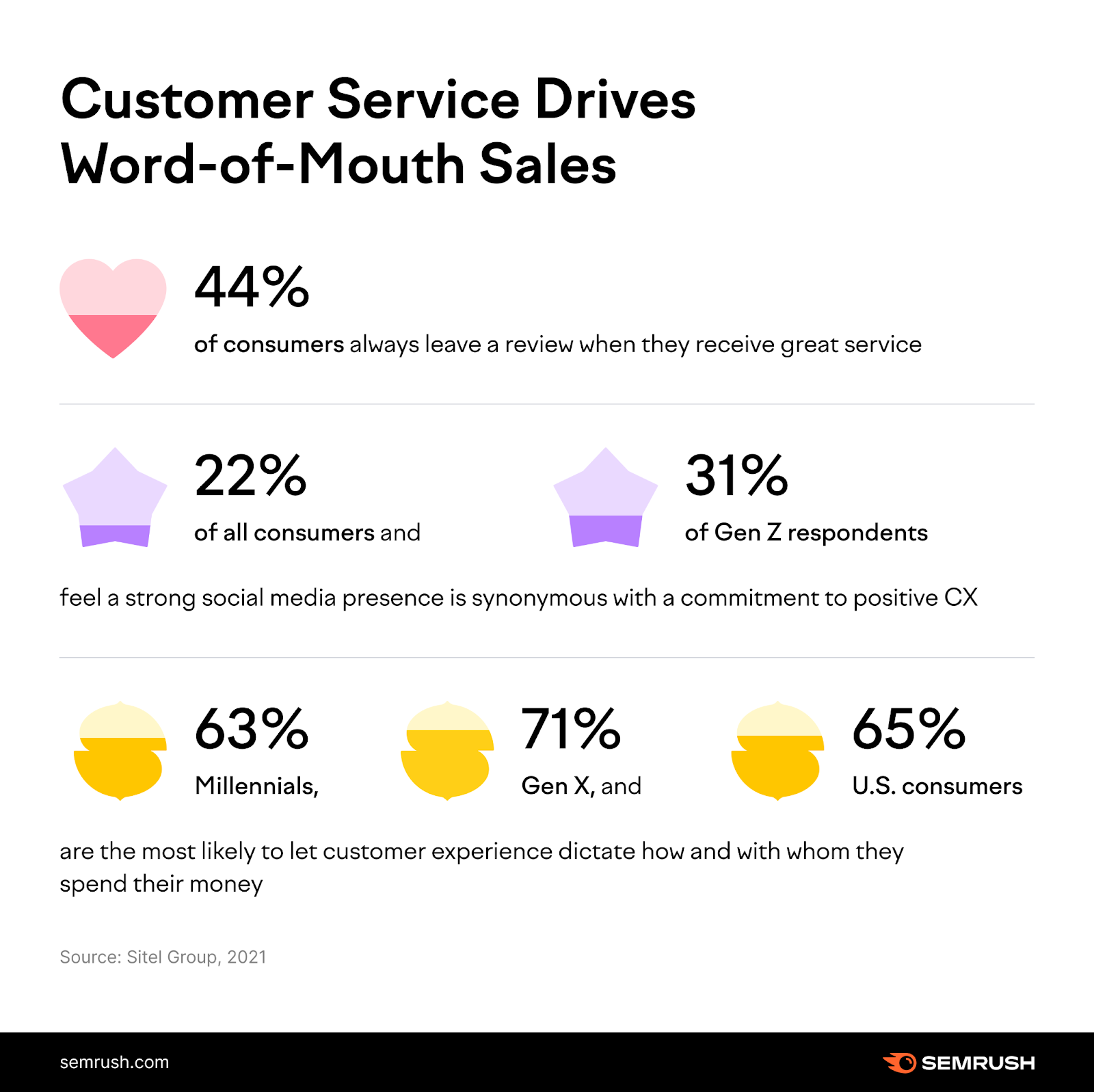
So, what does personalized service look like?
Addressing customers by name is important but not enough. Go further by providing helpful responses to customer queries.
Adobe showed off its helpfulness in public by responding directly to a customer’s question about one of its products on Twitter:
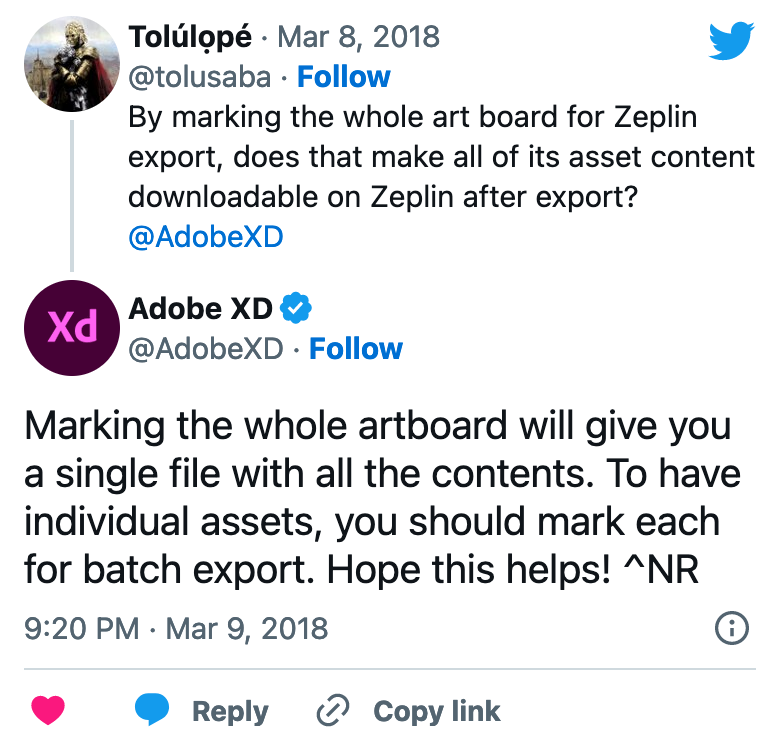
Replying to positive and negative reviews, making product recommendations, and offering a range of communication options all help personalize customer experiences.
Take some of your inspiration from successful hospitality businesses. Management from the Fontaine Hotel in Kansas City, Missouri, posted this response to a recent review:
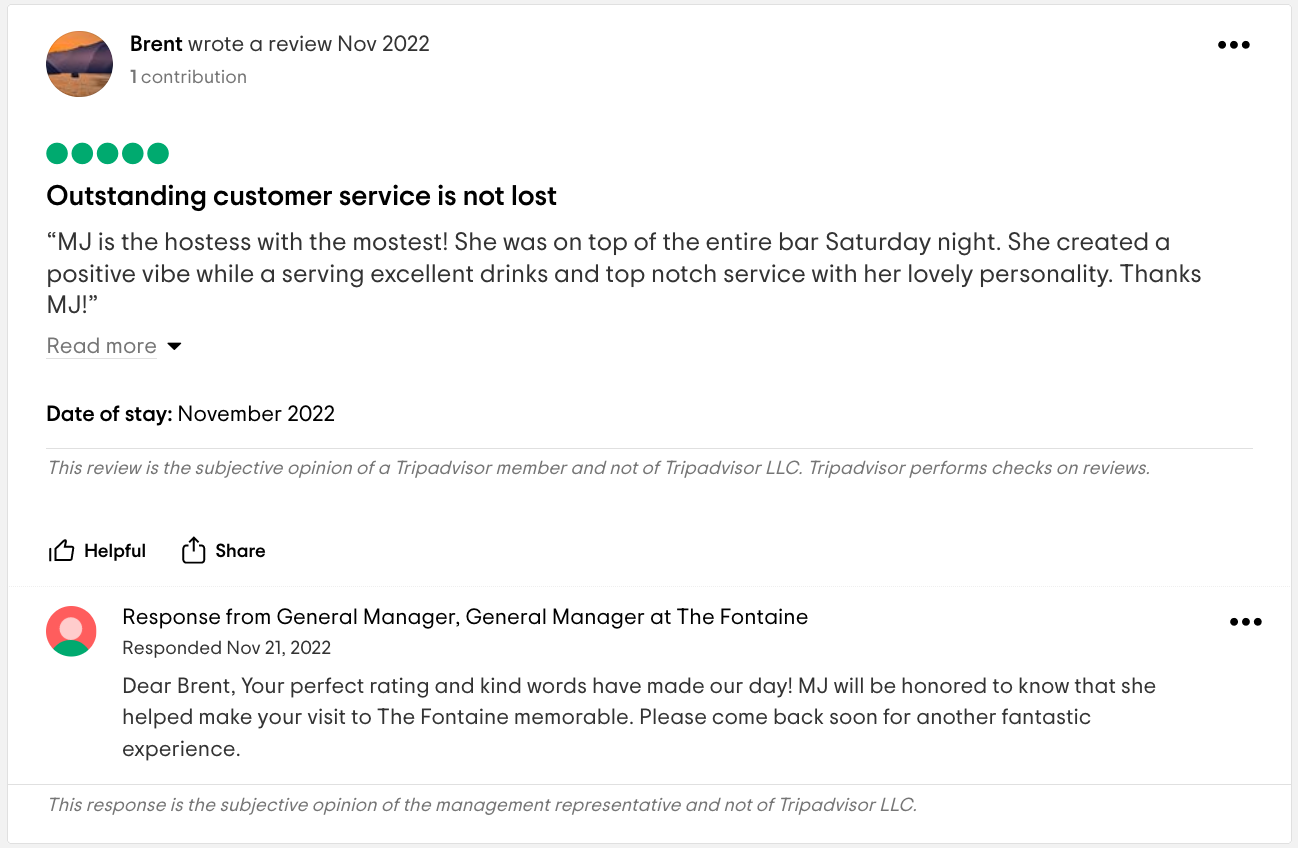
In it, the hotel addresses the reviewer by name, refers to specific comments, and includes an informal call to action (CTA).
The hotel’s staff have responded to almost every review. It shows potential customers that the business cares about guests’ experiences.
2. Appeal to Buyers’ Values
Brands with purpose sell more, so be clear about what your company stands for.
A Razorfish and Vice Media Group study found that 82% of consumers questioned make purchase decisions with purpose in mind. It also identified websites, social media profiles, and advertisements as the best places for brands to broadcast their values.
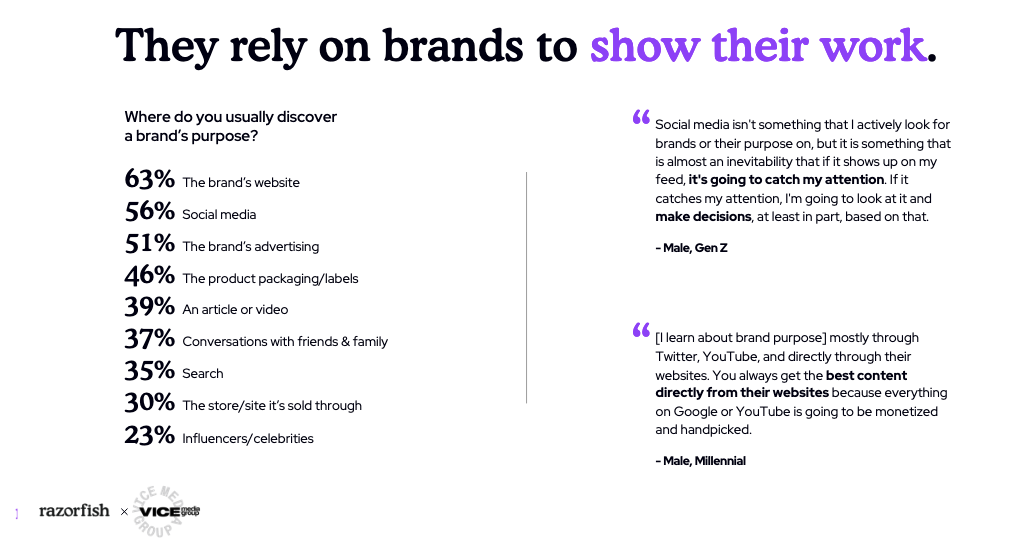
For instance, a growing percentage of consumers are willing to shift loyalty to support brands that are concerned with preserving the environment. Globally, 85% report changing buying behaviors toward sustainability in the past year.
Patagonia is a strong example of a brand whose proactive approach to this value resonates with buyers.
The company’s website describes its 1% for the Planet initiative:
“Since 1985, Patagonia has pledged 1% of sales to the preservation and restoration of the natural environment. We've awarded over $140 million in cash and in-kind donations to domestic and international grassroots environmental groups making a difference in their local communities. In 2002, founder of Patagonia, Yvon Chouinard, and Craig Mathews, owner of Blue Ribbon Flies, created a non-profit corporation to encourage other businesses to do the same.”
The approach works. In 2022, the company was third in Axios’ reputation rankings of the U.S.’s most prominent brands, ahead of bigger corporations such as Amazon, Samsung, and Toyota. It shows in sales: Patagonia reportedly generates around $1 billion in revenue per year.
3. Grab Attention with Impactful Lead-Gen Content
You need qualified leads to sell products. These are prospects generated by the marketing team, evaluated by sales, and aligned with your ideal customer profile.
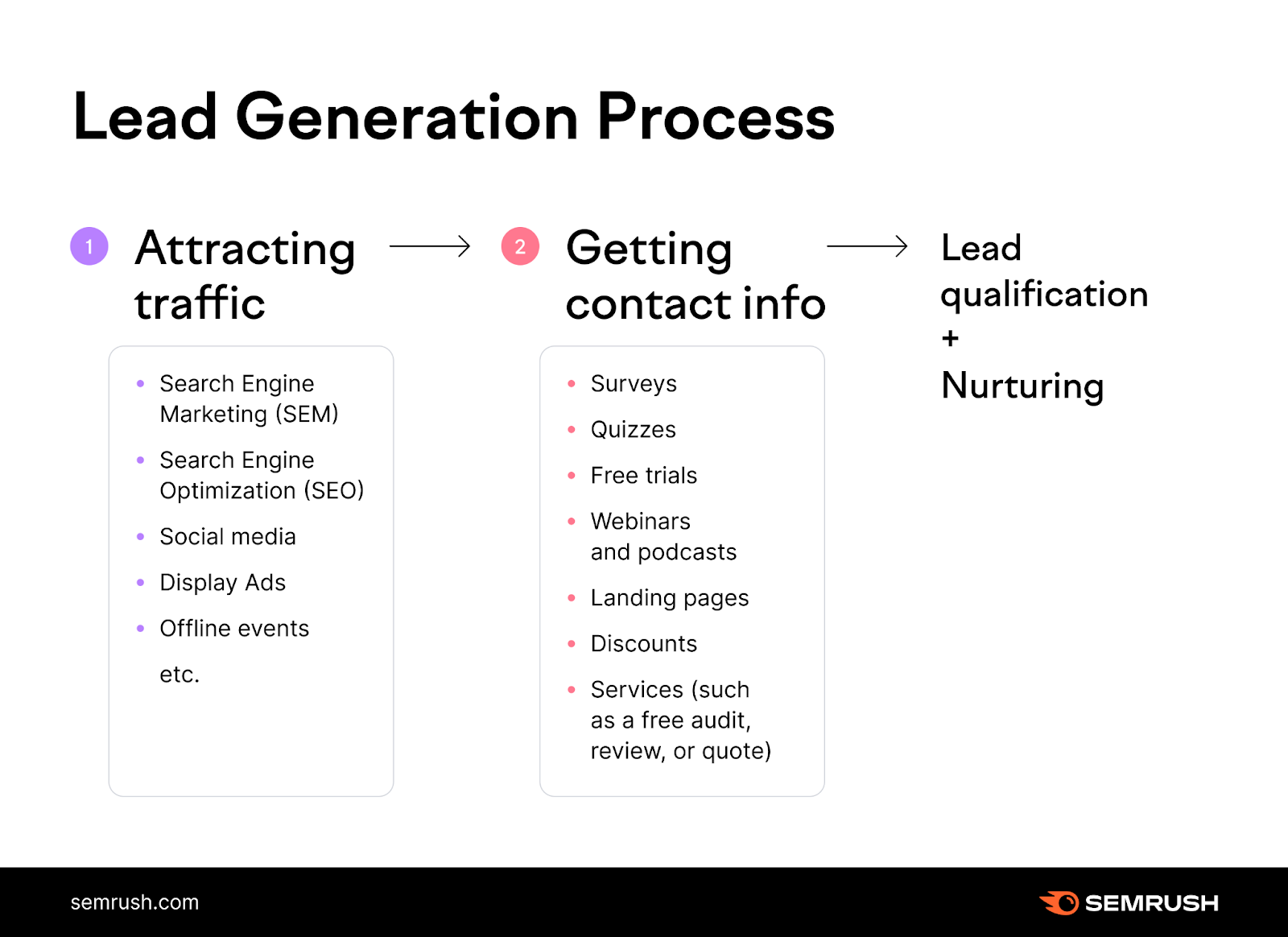
Outperforming your competition at lead generation can net big gains.
A broad approach can help you reach a bigger audience.
Useful strategies include:
- Organic search engine optimization (SEO): Write and optimize content that users will find at the top of search engine results. The Semrush SEO Toolkit can help.
- Social media: The direct nature of platforms such as Twitter, Facebook, and TikTok are useful for small-business lead generation. Use a mix of organic and paid activities (ads).
- Pay-per-click (PPC): With thorough keyword research, engaging ad copy, and a careful bid strategy, PPC can quickly get the right eyes on your brand.
- Local media ads: Each customer means more when you’re running a small, local business. Get in front of them using ads in local media and online directories.
- Influencer marketing: Borrow the trusting audiences of respected influencers in your industry.
- Content marketing: Populate your website with value-packed content to create a steady stream of traffic. Semrush’s Content Marketing Toolkit can save you time on topic research and blog writing.
Essentially, treat everything your business says and does as a chance to grab attention.
Use content to appeal to your ideal customers’ needs. Before you can build trust and authority, you need to get them intrigued enough to look into your brand.
4. Build Trust with Brand Storytelling
Brand storytelling is building emotional connections with an audience. All successful companies must do it well.
Take Bob’s Red Mill, a U.S. food manufacturer with a history of sustainability and philanthropy.
The company’s website makes its story clear. Look at the “Bob’s Way” section. There’s as much content about the brand’s background and purpose as there is about its products.
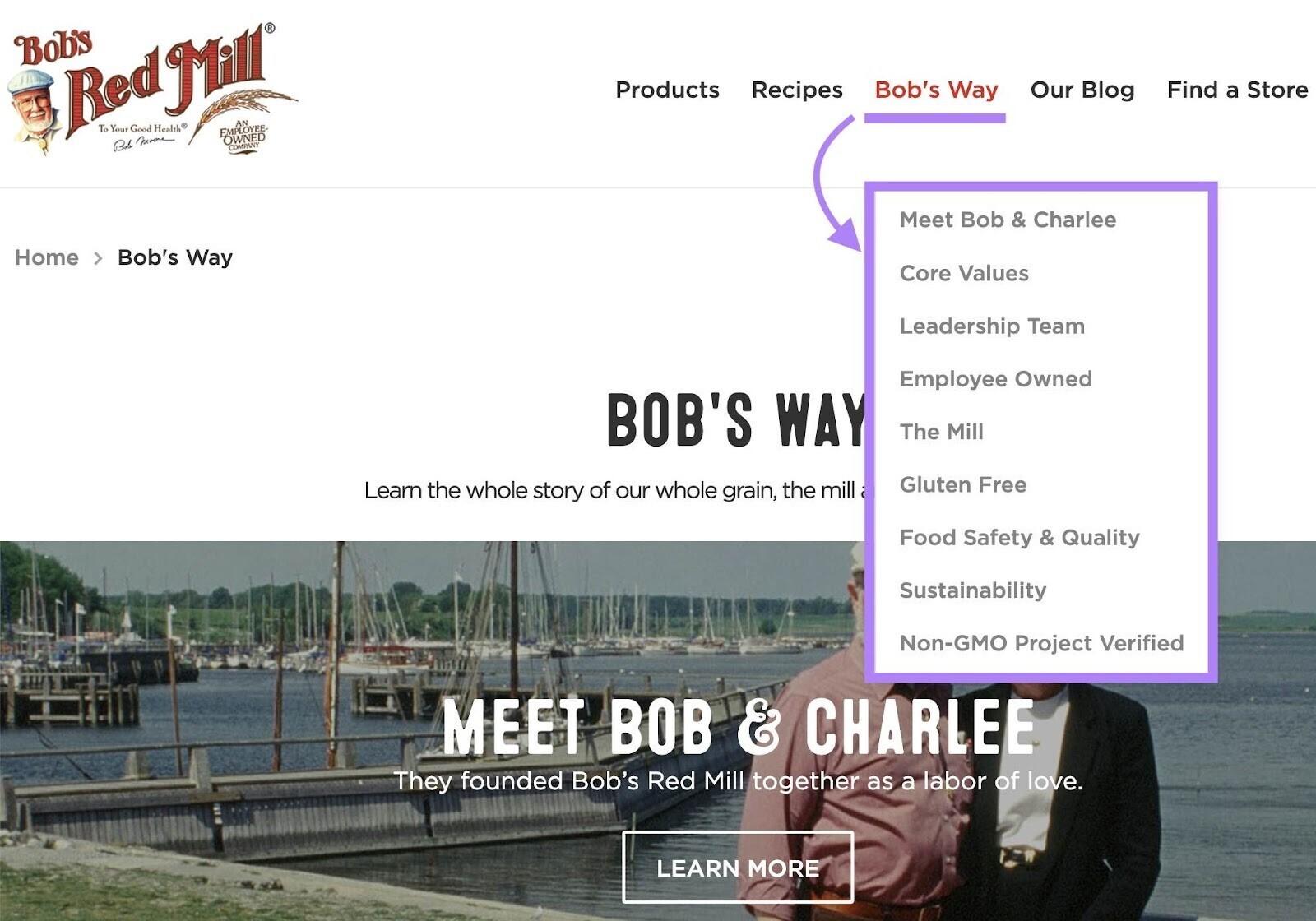
Even the brand’s logo shouts “story.” It’s not just any red mill. It’s Bob’s. And there’s a picture to humanize the business:
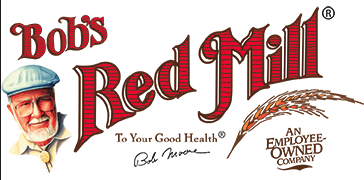
The addition of “an employee-owned company” tells people there’s more to this business than its competitors.
Buyers become part of the story by buying products. There’s a stronger emotional connection here than with a faceless brand whose sole focus is sales.
Tell your story using a range of content types. Aim to communicate brand value, trigger emotion, and inspire action through:
- Slogans and taglines
- Social media activity
- Case studies
- Videos
- Blog posts
Your narrative should be consistent and honest throughout all channels. Don’t be afraid to show imperfections. One Sprout Social study found that 86% of Americans believe business transparency is more important than ever before.
5. Make Buying Easy
Your customers want an easy ride.
Say two businesses are in a highly competitive market. They both offer the same item at the same price.
- Seller No. 1 has a confusing website layout, provides minimal product info, and forces buyers through a long check-out process.
- Seller No. 2 has demo videos, offers free trials, and accepts various payment methods.
If the customer is aware of both options, they’ll almost certainly buy from seller No. 2
Research supports this. McKinsey’s study on buying decisions shows consumers want straightforward store navigation above all. More than tailored messages, personalized promotions, and aftercare.
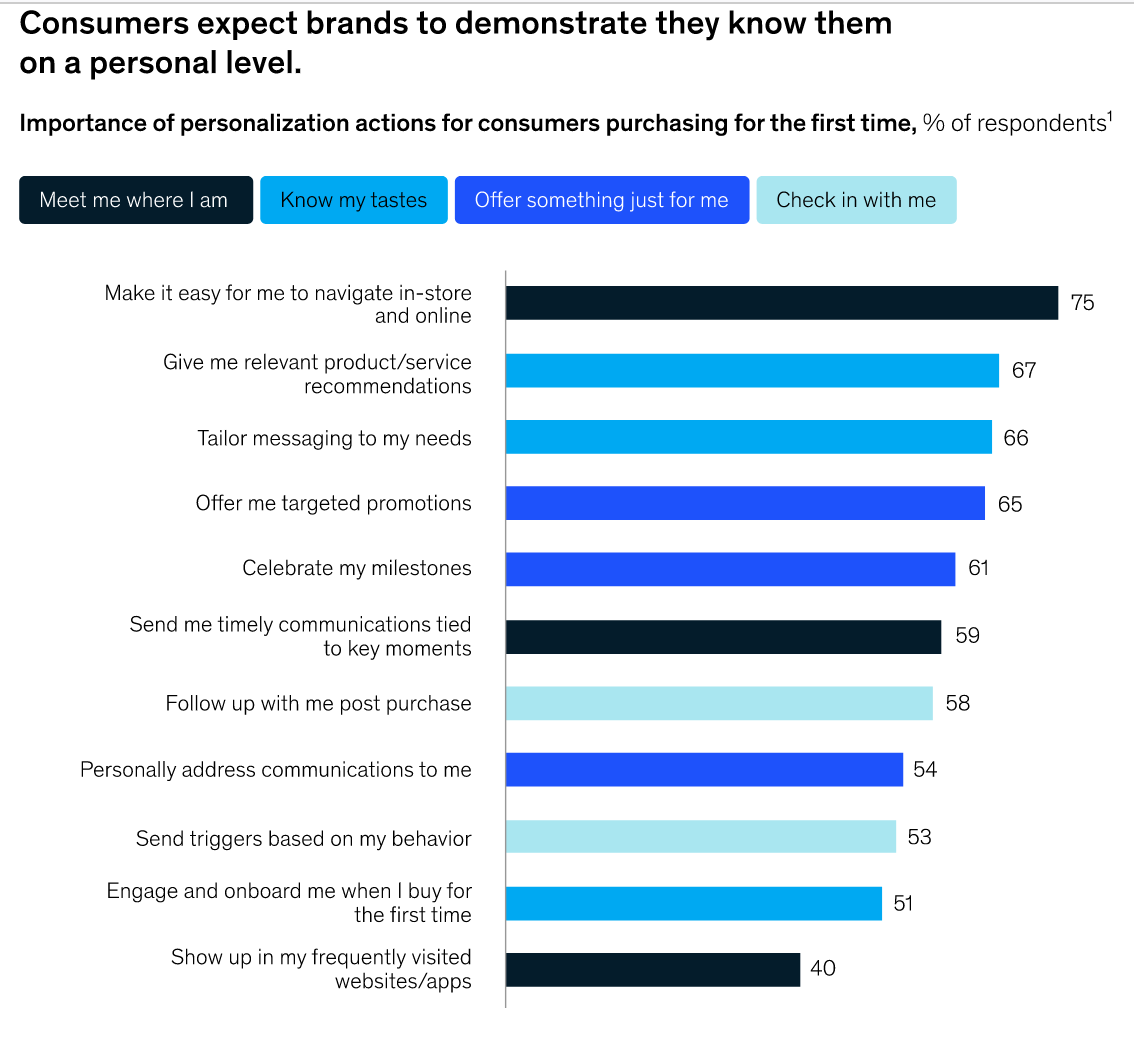
The easier it is for people to access your products, the more likely they are to buy.
For example:
New Jersey is part of Bang Cookies’ identity and brand story. The company highlights that in its content. But it doesn’t let physical location stop people across the U.S. and beyond from buying its products.
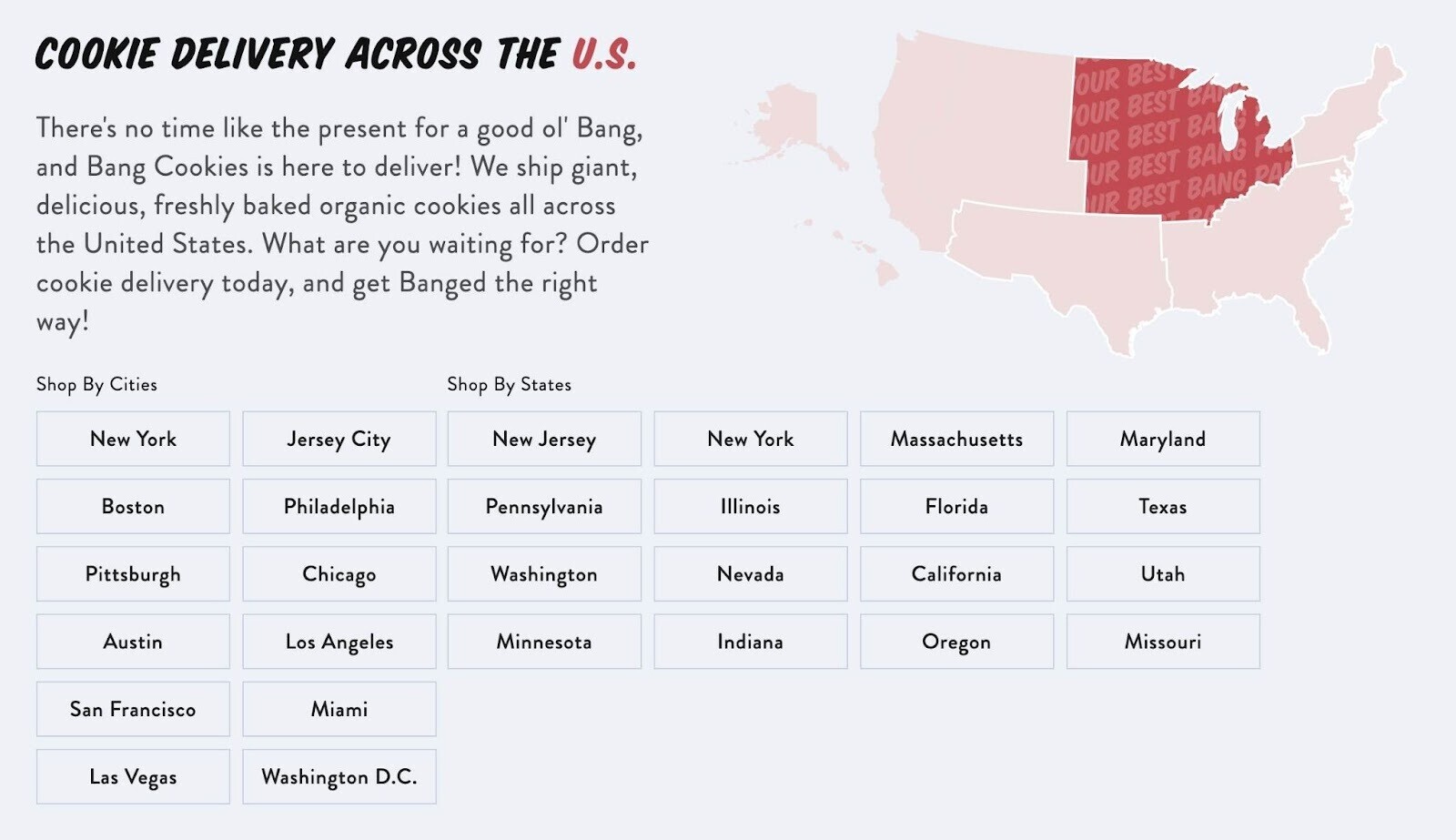
International delivery is normal in e-commerce, but less so for companies selling freshly baked cookies. It’s a big differentiator.
The company makes it easy for shoppers in different locations to find and buy products on its website.
Filters for delivery and pick-up options, express checkout methods (PayPal and Google Pay), and plenty of supporting information make for a convenient user experience.
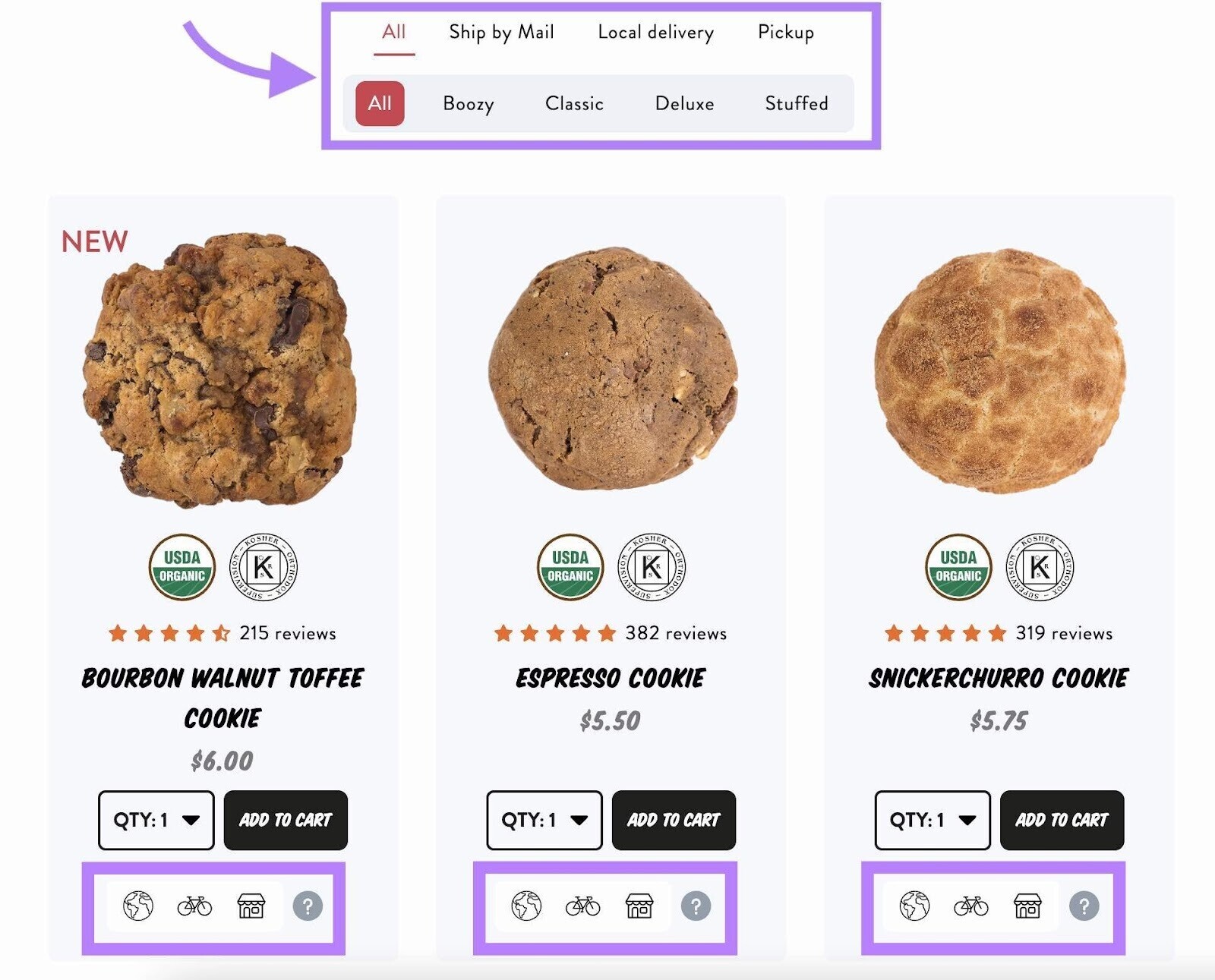
Read reviews, use surveys, and monitor website behavior to learn what customers value about your sales process. Refine your website’s user experience to keep customers coming back.
You Can Stand Out in a Highly Competitive Market
The perfect competition model may not be realistic, but most businesses do have close competitors.
Instead of seeing these companies as threats, use them for motivation.
Track their actions to learn what makes your business unique. Market your differentiators through a range of channels to attract and retain a large number of buyers.
